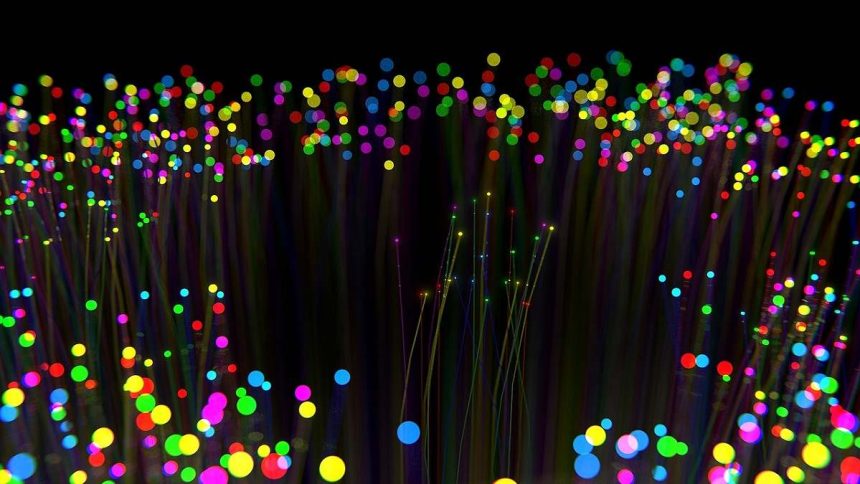Electricity is commonly transmitted through metal wires, a fact that most people are familiar with. However, did you know that light can also be transmitted from one place to another? The difference is, unlike electricity, light cannot be transmitted through metal wires. Instead, glass fibres are used to transport light over long distances. These fibres are extremely thin, and the science behind their use is known as fibre optics.
The History of Fibre Optics: A Discovery by John Tyndall
The concept of transmitting light through fibres was first proven in 1870 by British physicist John Tyndall. He demonstrated that light could travel through a curved path using a glass or transparent plastic rod. This process is made possible by internal reflection. As light enters the glass fibre, it bounces off the inner walls, following a curved path and continuously reflecting until it exits at the other end. This principle of internal reflection remains the backbone of fibre-optic technology today.
The Structure of Optical Fibres
Optical fibres have a specific structure that makes light transmission possible. The central part of the fibre is called the core, which is made from glass with a high refractive index. Surrounding the core is a thin layer of glass with a lower refractive index, known as the cladding. This combination of high and low refractive indices ensures that light remains within the core, bouncing back and forth through the process of internal reflection, without escaping the fibre.
How Optical Fibres Are Made
Creating optical fibres is a highly technical process. It begins with thick glass rods that are melted in a special furnace. A rod with a high refractive index is placed inside a tube made from glass with a lower refractive index. The two are passed through a vertical furnace where the glass melts, and a motor pulls out a thin fibre, wrapping it around a drum. These fibres can be as thin as 0.025 mm in diameter.
Once drawn, these fibres are carefully arranged into straight lines in a bundle. An important rule during this process is that no fibre should cross another, as this would disrupt the light transmission. When properly aligned, the fibre bundle can be bent in various ways without affecting the flow of light.
Applications of Fibre Optics
Optical fibres have a wide range of applications, spanning from medical uses to telecommunications. One of the most well-known uses is in fibre scopes, which doctors employ to examine internal disorders, particularly within the stomach. By sending light through the fibre-optic cable, they can get a clear view of internal organs. Photos of these organs can also be captured by inserting the fibre bundle into areas like the stomach or bladder.
The Future of Fibre-Optic Communication
Fibre optics are also revolutionizing communication technology. Today, television programmes, telephone conversations, and even internet data can be transmitted through fibre-optic cables. In fact, scientists predict that in the near future, thousands of telephone messages could be sent simultaneously on a single fibre, thanks to laser beams and advanced fibre-optic techniques. Many developed countries have already adopted fibre-optic glass wires in their telephone exchanges, and their use in video text, video fax, and computer networks is expanding rapidly.
Fibre optics represent a crucial advancement in both communication and medical technology. The ability to transmit light through thin glass fibres has opened up a world of possibilities, from enabling doctors to explore internal organs non-invasively to making long-distance communication faster and more efficient. As technology continues to evolve, fibre optics will undoubtedly play an even larger role in how we communicate and diagnose medical conditions.




